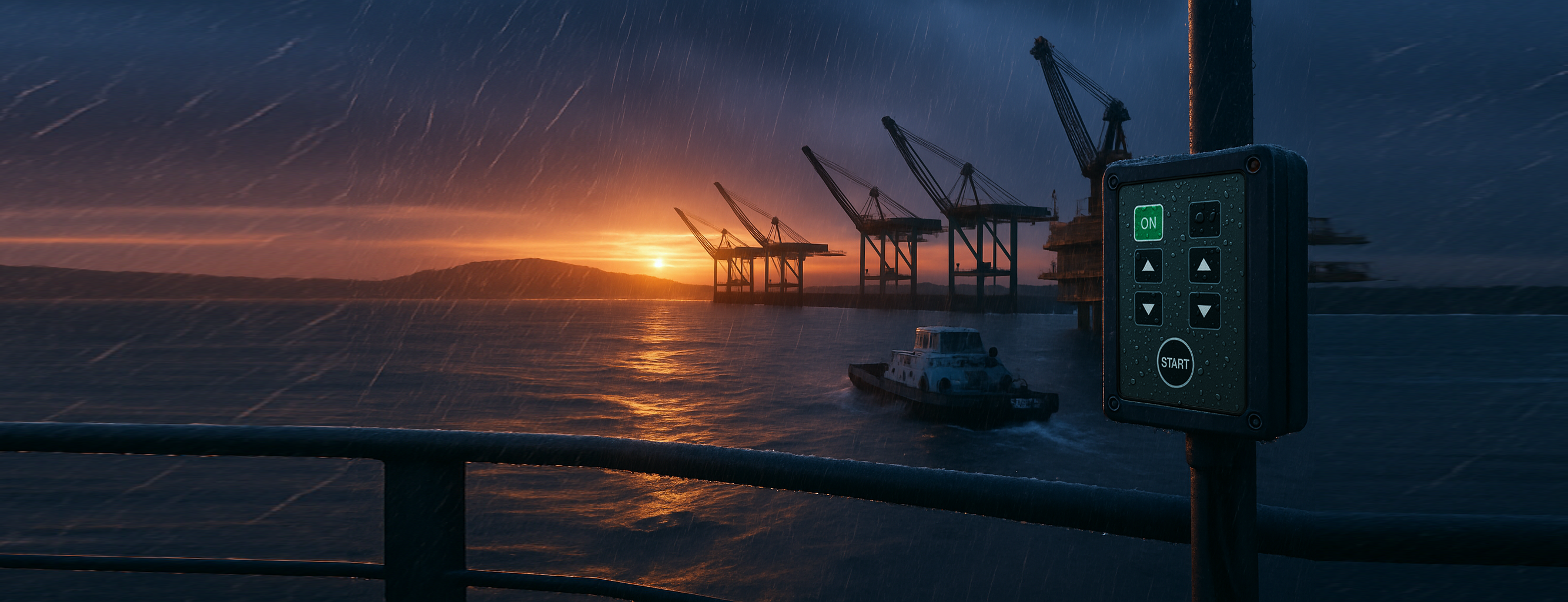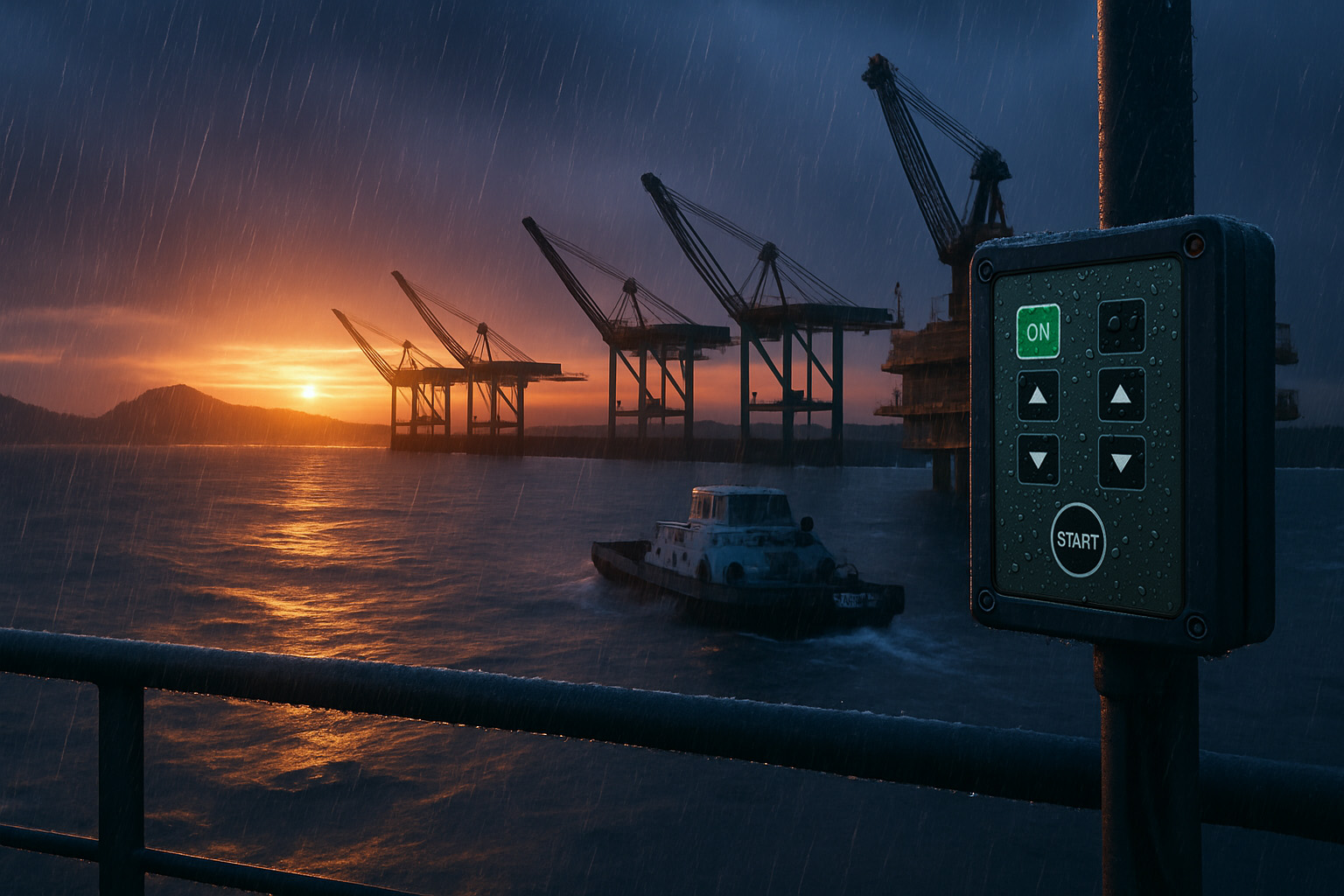
When device performance means the difference between system uptime and mission failure, interface reliability becomes critical, especially in industrial, medical, and transportation environments. Engineers and OEMs operating in harsh conditions face challenges like corrosion, moisture damage, temperature fluctuations, and mechanical wear, degrading standard panel interfaces. How confident can you be in switch performance when your system’s resilience to dust, chemicals, or shock depends on these components? The next generation of membrane switch technology is poised to raise—and extend—that bar.
Modern mission-critical teams demand proactive design, not just reactive fixes. Avoid delays and frustrations caused by inconsistent materials, unreliable seals, and extended lead times outside your control. Forward-thinking engineering leaders aren’t just focused on UL compliance—they’re seeking supply partners who can optimize press life, field serviceability, and extreme usability. That’s where VCC steps in—as both innovator and implementation partner.
Performance in contaminated or dynamic environments isn’t just about surviving daily use—it requires chemical, moisture, and vibration resistance at the adhesive and overlay level. Industries such as instrumentation, oil and gas, outdoor kiosks, and heavy vehicles require switches that are tested far beyond basic tolerance levels. VCC’s engineering focuses on real-world applications, using advanced blockers, latex spacers, and silver-filled inks designed to minimize impact fatigue, stick failures, and overlay degradation over years of use.
Relying on off-the-shelf distributors can leave design teams blind to the nuances of their specific use case. OEMs requiring custom cables, branded icons, EMI shielding, or durable finishes quickly learn that “one-size-fits-all” rarely performs in extreme environments. This is where VCC excels—co-engineering interface solutions that bridge the last-mile details with rapid prototyping and scalable production. With expertise in compliance and vertically integrated nearshore manufacturing, VCC delivers more than components—we deliver partnership.
How Ruggedized Membrane Switches Evolve—A Strategic Guide
Pushing the boundaries of reliability starts with more than tough materials. It requires a strategy: environmental risk assessments, local supply chain agility, and continuous engineering feedback loops.
Begin by identifying environmental stressors and collaborating with experts who specialize in harsh conditions. Define tactile response, sterilization resistance, and backlighting performance—even in environments with sandstorms or frequent chemical exposure. From custom adhesives to robust overlays, every element must be selected with field durability in mind. Choose suppliers using consistent encapsulants, shielded membrane connectors, and full-state/API validation to ensure that design reliability translates into real-world performance.
Flexible membrane solutions didn’t emerge in a vacuum—they’re the result of hands-on collaboration and engineering foresight. With VCC’s hubs in California and Mexico, OEMs benefit from low-latency, mid-volume production that reduces lifecycle costs and extends field performance. From UV-resistant coatings to waterproof seal geometries, we meet evolving demands—whether it’s disinfection in medical settings or dashboard controls in freezing transit systems.
Even factors like tactile response or lamella spring architecture can dramatically alter a product’s altitude tolerance or wash-down rating. For applications that can’t tolerate failure, VCC offers consistent, scalable solutions rated for billions of activations. From noise mitigation to pixel clarity under sunlight, we align mechanical and visual performance with fast-turn support, integrating every approved foam, adhesive, and component into a complete switch system.
Explore how VCC’s membrane switch capabilities support your most rugged use cases here.
Step-by-Step: Selecting the Right Membrane Switch for Harsh Environments
1. Needs Assessment → 2. Material Matching → 3. Custom Graphic/Electronic Fit → 4. Prototype-to-Production Sprint
Involve local partners early and consider key secondary operations, such as water sealing, IPC certification, or LED integration. Define your use case, from lighting transitions to tactile triggering, and move quickly from concept to qualified assembly.
From automotive impact testing to steam sterilization cycles, VCC membrane switches are built and tested to meet your go-to-market goals. With four decades of HMI and rugged electronics experience, we’re ready to calibrate with your team—without waiting on overseas logistics.
Q1: What are membrane switches, and how are they engineered for harsh environments?
Membrane switches are low-profile interface panels composed of multiple adhesive and conductive layers that transmit user input through domes, circuits, and overlays. For harsh environments, these interfaces are engineered with rugged overlays, hermetically sealed structures, and tested adhesives to withstand moisture, UV, chemicals, vibration, and temperature extremes.
Q2: How do VCC’s membrane switches compare to catalog options from distributors like Digi-Key or Mouser?
Unlike standard catalog components, VCC provides end-to-end engineering tailored to your exact application. Our solutions include application-specific overlays, sealing methods, traceable materials, and rapid prototyping—all backed by vertically integrated manufacturing. We focus on performance, not one-size-fits-all SKUs.
Q3: Where have VCC’s membrane switches been deployed in high-severity applications?
VCC’s rugged membrane switches are used in rail systems, medical labs, marine control panels, oil and gas instrumentation, and outdoor kiosks. These environments demand high resistance to contaminants, temperature shifts, impact, and daily operator use—all of which VCC’s designs are validated to withstand.
Q4: What makes nearshore production faster than offshore for membrane switch development?
Nearshore manufacturing enables rapid prototyping, faster feedback loops, and local engineering collaboration—significantly reducing lead times. VCC’s California and Mexico facilities eliminate long shipping delays and enable fast pivots during production, helping OEMs stay agile from design through volume scaling.







